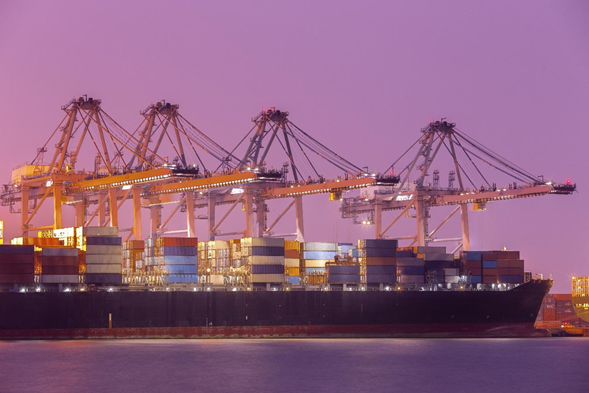Envíanos un correo a hello@looper.mx Llámanos al +528717478144
Maritime shipment step by step
A maritime shipment involves the transfer of merchandise by river and sea. As its name indicates and involves a series of administrative and operational processes whose main purpose is to move merchandise from its POL Port of Loading, to its POD Port of Discharge.
About 11 million tons of products are shipped every year. This figure accounts for the port movement and the complexity of the logistics that lets the transfer of products by sea.
More than 4/5 of the volume of goods circulating in the world does so by sea . For this commercial flow works well, exporting / importing companies, ports, shipping companies and freight forwarders concur.
The freight forwarders are responsible for the logistics management of the transfer of goods from a port to another one. In these logistics operators, the companies delegate all the processes of transport to port, embarkation and disembarkation at the destination port.
What can be transferred by boat? What procedures must be carried out to be able to ship the merchandise? What is the “ bill of lading “?
Maritime shipment conditions
The maritime shipment of properties presupposes high volumes of cargo. Each type of merchandise requires specific maritime shipping conditions, and a type of ship; are described in the following table.
| Type of vessel | Characteristics |
| Container ships | They are large and capacity ships. The largest, up to 20 thousand teus *. They transport containers from 10 to 45 feet, adapted to ISO standards. |
| General or multipurpose cargo | This type of vessel does not have containers in the hold; only on deck. They adapt to various kinds of palletized (pallet-handled), dry or liquid loads. They contain tanks for liquids and refrigerated tanks. |
| Bulk carrier or bulk carrier | In this case, they transport loose cargo, in bulk. But they can also transport vehicles and machinery. |
| Roll-on / Roll-off | They transport wheeled cargo (vehicles, with or without cargo), loaded and unloaded using ramps. They can carry between 2,000 and 7,000 cars. |
| Refrigerators | This vessel transport perishable merchandise, which requires maintaining a refrigeration chain. |
| Of chemical loads | They transport chemical products in tanks conditioned for each type of substance, according to the degree of toxicity and corrosivity. |
| From liquefied or methane gases | They transport liquefied natural gas, in tank tanks, in a semi-pressurized environment, at a temperature of -160 ° C. |
| Heavy lift cargo | These vessels move very heavy and high-volume loads, from industrial machinery to other smaller vessels and oil platforms. |
| Livestock | They transport live animals, generally livestock. |
(*) Teus is the measure of cargo that is expressed in the number of 20-foot containers that a ship can transport (from the acronym of Twenty Foot Equivalent Unit, in English).
Procedures for maritime shipment
The shipment, maritime transport and disembarkation of the merchandise requires a series of formalities and customs procedures:
- Issuance of the bill of lading or B / L (Bill of lading).
- Consignment of merchandise.
- Payment of freight and port fees.
- Delivery of the certificate of origin of the merchandise.
- Consignment of commercial invoices.
- Freight transportation from customs to the container or palletized cargo warehouse.
All or a good part of these actions are carried out by the logistics operator. Some shipping companies play the same role as operators or freight forwarders. But the latter play an additional role as advisers in the entire process of transporting goods.

What is the “bill of lading”?
This is a document that regulates the conditions of shipment, transport and disembarkation of merchandise by sea . It is a proof, both that the merchandise is received in good condition for shipment, and that it is owned. This document must specify the following aspects:
- Port of loading and unloading;
- Name of the vessel and number of the voyage;
- Description of the merchandise (Packing list);
- Amount and type of freight (if it has been paid at the port of departure, Freight prepaid, or if it will be paid at the port of destination, Freight collect).
The bill of lading can be issued both by the shipping company that will carry out the transport and by the logistics operator or freight forwarder. It is a mandatory requirement for maritime shipment .
What is the advice and action of a logistics operator for?
Attending the logistics necessary for a successful maritime shipment requires knowledge, infrastructure and relationships with all the actors involved. As well as keeping up with the growing digitization and automation of port activities. The advice and action of an efficient logistics operator allow:
- Select the most appropriate shipping company for the type of cargo and the route , evaluating costs and reliability.
- Offer or contract the transport of the merchandise from the factory to the port.
- Monitor the correct packing and storage of the cargo.
- Evaluate merchandise insurance options and advise on the matter.
- Consign all the documents required for the shipment of the cargo.
- Lastly, the logistics operator’s relationships with port agents and shipping companies facilitate better conditions, prices and opportunities.
Large-scale export is supported by maritime transport. The use of this route requires efficient logistics, in which the choice of a company that advises you, gives you options and has the flexibility you need is essential.
At Looper we support you considering your shipping needs and delivery commitments, whatever the type of shipment: FCL, LCL, Break Bulk, or Maritime Charter, you must support yourself with our team to achieve a more successful case.
The post MARITIME SHIPMENT STEP BY STEP first appeared on LOOPER.
Loopering









Somos un equipo comprometido a brindarte la mejor experiencia mediante la adaptación de soluciones integrales e innovadoras que contribuyen al desarrollo óptimo de tu cadena de suministro. Nuestra especialidad es el transporte y la logística internacional.



